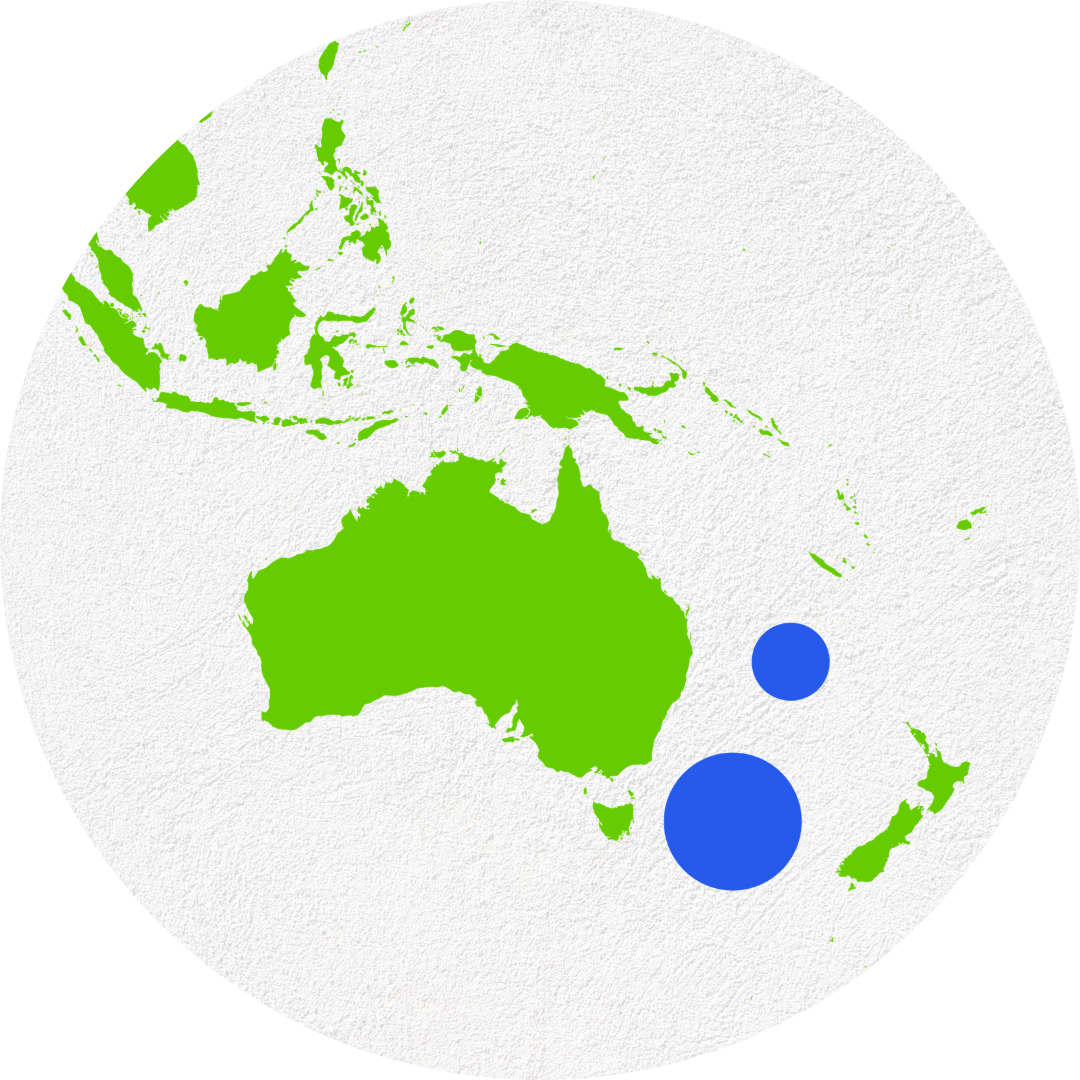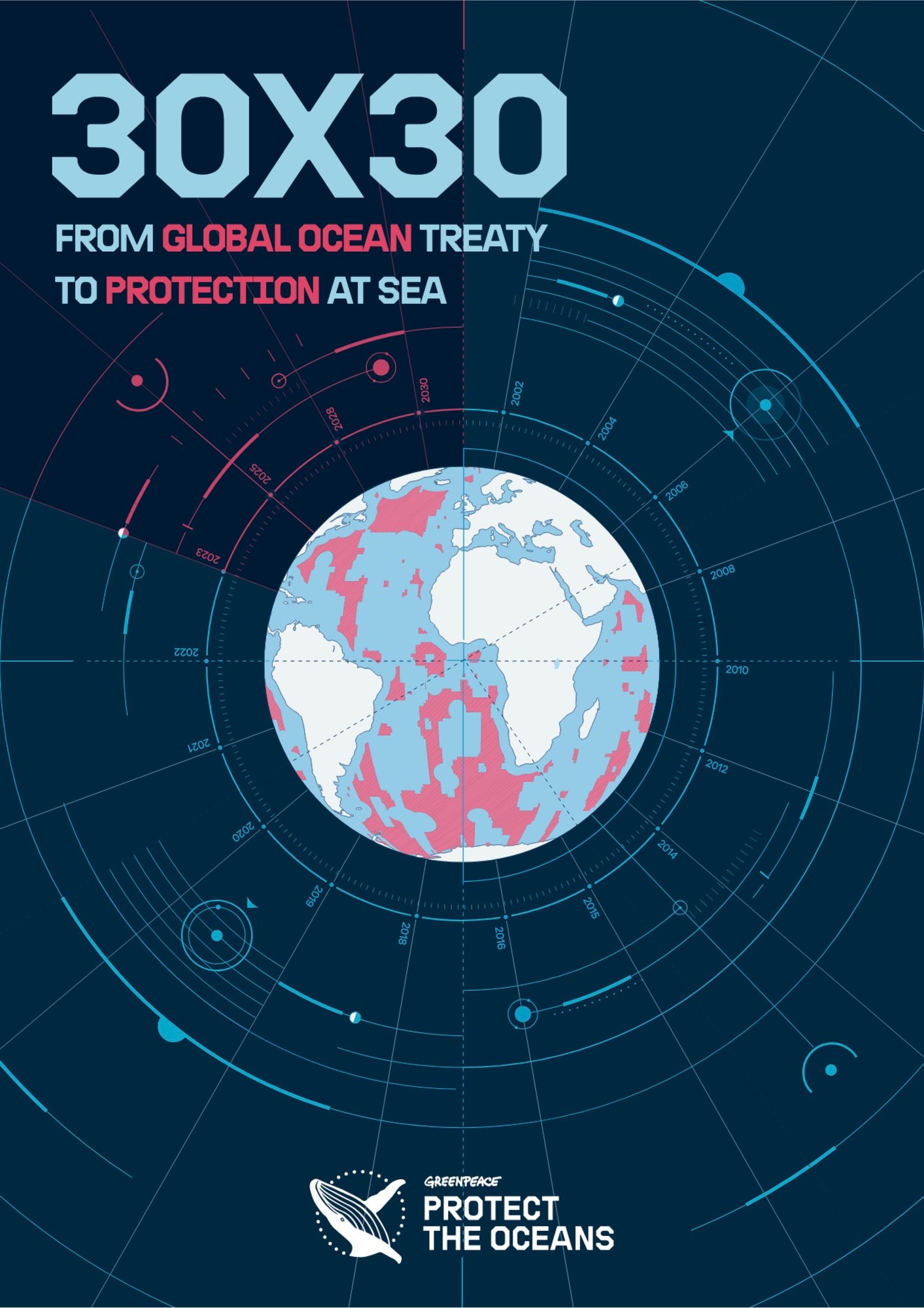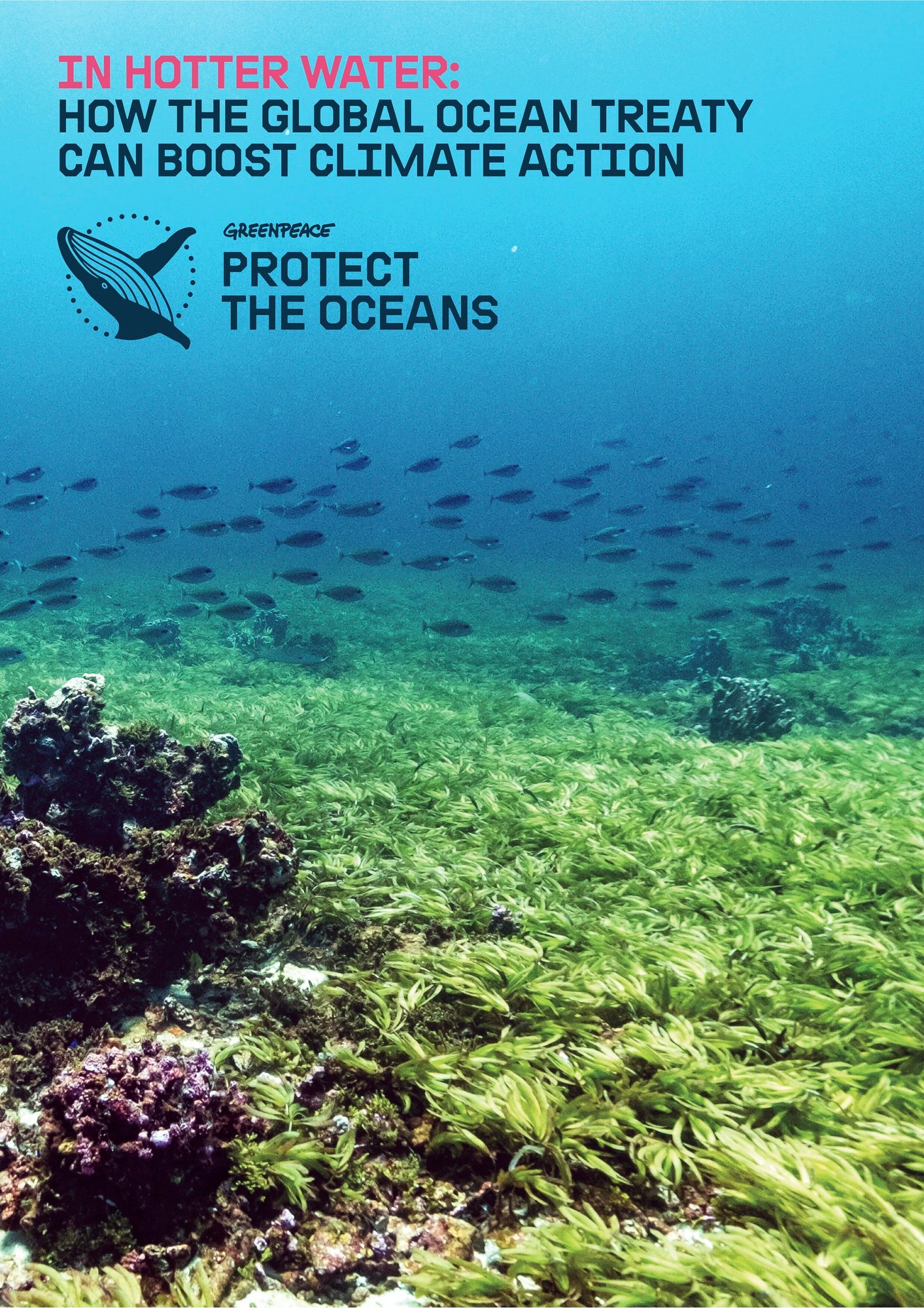Journey to Protect the Lost World
Protecting Our Blue Backyard - The Tasman Sea
Greenpeace is on a mission to protect the incredible biodiversity of the Tasman Sea, the vibrant ocean corridor between Australia and New Zealand. Within the Tasman Sea, the Lord Howe Rise and the South Tasman Sea regions are teeming with life, including seabirds, sharks, diverse fish species, and migrating humpback whales. Seamounts, or underwater mountains, create vibrant habitats that sustain ancient coral gardens and unique species, making this region one of the most important biodiversity hotspots on the high seas.
We’re calling on the Australian Government to help safeguard the ocean by ratifying the Global Ocean Treaty and championing a marine sanctuary to protect Lord Howe Rise and the South Tasman Sea, ensuring these ecosystems can flourish for generations to come.
In November 2024, Greenpeace visited Lord Howe Island, the jewel in the crown of the Lord Howe Rise, to document its underwater wonders and show how this volcanic lost world is a crucial gateway to the South Tasman Sea. We’ll spotlight its beauty, highlight its importance, and tell stories of the incredible marine life who call it home.
Together, we can help ensure a thriving future for the ocean and protect all life that depends on it.
Sign the petition NOW
Climate change, pollution and overfishing are pushing our oceans to the brink of collapse. Food security and the livelihoods of billions of people hang in the balance.
After years of campaigning, the first ever Global Ocean Treaty was approved, but governments now need to sign it into law, to make protected areas a reality at sea. Time is running out, and reaching this target will require a strong and urgent political response.
But there is hope and the Australian Government needs to be a leader in protecting the ocean.
107 signatures. Help us get to 10000!
PETITION
I call on Environment Minister Tanya Plibersek to urgently ratify the Global Oceans Treaty, and champion an ocean sanctuary in the Tasman Sea, where marine life can recover and thrive.
Petition | Journey to LH
By signing this petition you give permission for Greenpeace Australia Pacific to contact you with campaign updates. Your information is safe and secure with us – for more information please see our Participant Collection Notice and Privacy Policy.
Journey to Lord Howe Rise
The Greenpeace Australia Pacific team travelled to Lord Howe Island to document the unique beauty and diverse life of the Lord Howe Rise, the gateway to the abundant high seas.
Understanding Ocean Protection
Global Ocean Treaty
The Global Ocean Treaty is an essential tool for protecting life in the high seas. By creating new sanctuaries we can protect the ocean for the future.
Podcast: The Oceans Treaty finally passed last year after decades of negotiations – but what actually is it? And will it do anything?
The High Seas
The high seas are the waters of the open ocean that sit beyond the control of individual nations and are a largely-unexplored world, abundant with life.
Podcast: Did you know that pretty much anything goes in international waters? Past a certain point national jurisdiction ends and the Wild West begins.
A Volcanic Lost World
Seamounts are underwater mountains and biodiversity hotspots rich with life. We are only just beginning to understand these underwater paradises.
Podcast: The world's longest mountain range is actually in the middle of the ocean - the mid-Atlantic ridge, at more than 40,000 miles long. But who knows about these mountains?
Ocean Sanctuaries
Marine Protected Areas (MPAs) are special parts of the ocean set aside to protect marine life and ecosystems. They vary in how strict their rules are, from minimal protection to fully protected zones that prohibit harmful activities like overfishing and deep sea mining. Right now, there’s no global system to create these in international waters, but the Global Ocean Treaty can change that, providing a framework for creating protected areas on the high seas.
The Lord Howe Rise and South Tasman Sea are two proposed marine sanctuary sites located in ‘The Ditch’ between Australia and New Zealand. The complex topography and nutrient-rich currents in these areas create ideal conditions for species like tuna, whales, seabirds, and ancient corals to thrive.
Establishing a sanctuary here would not only safeguard endangered species, like the South Pacific humpback whale and several types of albatross, but also provide a habitat for all marine life to thrive. These waters are under threat from activities activities like industrial fishing, including bottom trawling, pollution and the impact of climate change
By protecting the Lord Howe Rise and South Tasman Sea region, we can ensure a safe haven in the vast open ocean.

Protect The Ocean on Social Media

Across the waters between Australia and New Zealand, destructive fishing practices like bottom trawling are devastating the sea floor with weighted nets, killing dolphins, sharks, and corals - and destroying thousand-year-old ecosystems.
...But together we can put an end to it. 🪸🐬
https://act.gp/4i0ND2M
#ProtectTheOceans

And much of the high seas beyond our borders are being destroyed by industrial fishing like bottom trawling, plastic pollution and climate change.
...That's where the Global Ocean Treaty comes in.
#ProtectTheOceans

#protecttheoceans #climateaction
Learn more about ocean protection

30x30: Report
This report details how ocean warming, acidification, pollution and the emerging threat of deep sea mining are placing ever more strain on ocean ecosystems.

In Hotter Water
To this day, less than 1% of the high seas – the largest habitat on Earth, comprising 64% of the world’s ocean – is fully or highly protected from human activities.

From Commitment to Action
Through the Global Ocean Treaty, the global community can ensure the long-term health and sustainability of the ocean beyond borders.
Frequently Asked Questions
The high seas are international waters outside of national jurisdictions – so the waters that do not fall within the governance of any individual country.
The responsibility for protecting the high seas is outside any single state’s jurisdiction, but once ratified, the Global Ocean Treaty will allow for areas of the high seas like the Lord Howe Rise and South Tasman Sea region to be protected.
To create a large-scale ocean sanctuary to protect the Lord Howe Rise/South Tasman Sea region, states must create a proposal and submit this to the future Ocean Treaty Conference of Parties (CoP).
The ocean is one interconnected body of water.
Greenpeace is campaigning to protect ocean life in international waters – also known as the high seas.' However, we consider the Lord Howe Island Marine Park in Australian waters as a ‘gateway’ to understanding the broader marine ecosystems of the Lord Howe Rise and South Tasman Sea region we’re seeking to secure a marine sanctuary in as the ocean is one interconnected place, despite the boundaries humans draw on a map.
Lord Howe Rise is a vast underwater plateau in the south west Pacific Ocean that runs through parts of the Coral Sea and Tasman Sea and forms part of the hidden continent of Zealandia. The plateau extends from Australian waters, to south west of New Caledonia, to the Challenger Plateau west of New Zealand.
The areas we are looking to protect under the high seas treaty are in international waters, including the ‘Ecologically and Biologically Significant Areas’ (EBSAs) of Northern Lord Howe Ridge Petrel Foraging Grounds and the South Tasman Sea.
Seamounts are underwater mountains which create important habitat for ecosystems rich with species diversity – often called biodiversity hotspots.
Seamounts are massive underwater mountains that rise hundreds or even thousands of feet from the ocean floor. Primarily formed by volcanic activity, they can be found in all ocean basins around the world.
These unique structures create vital habitats for a wide range of marine life, including corals, mollusks, crustaceans, fish, and marine mammals. Seamounts also attract many migratory and highly mobile species such as tuna, sharks, sea turtles, and whales. Despite their global presence, less than 0.1% of the world’s seamounts have been explored.
A marine protected area is a tool for protecting parts of the ocean. It can take many forms depending on how the legislation is written. Until the Global Ocean Treaty enters into force, there is no global mechanism for creating MPAs in international waters (which cover over 70% of the ocean). Greenpeace is campaigning for marine sanctuaries with the highest protection.
There are four Levels of Protection in The MPA Guide which Greenpeace aligns with:
- Fully Protected: No impact from extractive or destructive activities is allowed, and all abatable impacts are minimized.
- Highly Protected: Only light extractive activities are allowed that have low total impact, and all other abatable impacts are minimized.
- Lightly Protected: Some protection of biodiversity exists, but extractive or destructive activities that can have moderate to significant impact are allowed.
- Minimally Protected: Extensive extraction and other activities with high total impact are allowed, but the site can still be considered an MPA under the IUCN protected area definition and provides some conservation benefit.
The South Tasman Sea and Lord Howe Rise are two linked sites in the South Pacific, located between Australia and New Zealand waters in an area of international waters sometimes called ‘the Ditch’. The South Tasman Sea consists of a deep abyssal plain with steep-sided seamounts that reach almost to the surface, and Lord Howe Rise is another complex chain of seamounts leading to a vast plateau to the north.
Lord Howe Rise is an underwater plateau and part of the submerged continent of Zealandia, a volcanic lost world running through parts of the Coral Sea, down to the Tasman Sea.
The South Tasman Sea is to the south west of Lord Howe Rise and is characterized by very high densities of seabirds, and foraging areas for numerous breeding and non-breeding birds. It also has seven seamounts within it which create thriving hotspots for marine life.
This site is an Ecologically and Biologically Sensitive Marine Areas as defined under the United Nations’ Convention on Biological Diversity. It is also among the High Seas Alliance’s recommendations for the first protected areas under the new Treaty
The Lord Howe Rise and South Tasman Sea section in the report “30×30: From Global Ocean Treaty to Protection at Sea” has more information on the importance of the region.There are any creatures, great and small, that call these regions home including:
- Acorn worms
- Sea pens
- Shrimp
- Tuna, including bigeye tuna and Southern bluefin tuna
- Swordfish
- Sharks
- Humpback whales
- Southern right whales
- A high diversity of fish species, including orange roughy, oreos, alfonsino and bluenose, and
- Some of the highest density of seabirds in the world, including 14 albatross and 6 petrel species
In 2024 and during the trip to Lord Howe Island, we’re calling on the Australian Government to do two things:
- Ratify the Global Ocean Treaty by the end of 2024 (and by the federal election!)
- Lead the development of a fully and highly protected high seas marine sanctuary in the Tasman Sea between Australian and New Zealand under the UN Global Ocean Treaty.
In 2023, Greenpeace published the report 30x30: From Global Ocean Treaty to Protection at Sea which outlines three key sites which are strong candidates for protection under the Global Ocean Treaty: Emperor Seamounts of the North Pacific, Sargasso Sea in the North Atlantic, and Lord Howe Rise/South Tasman Sea in the South Pacific.
These sites all are Ecologically and Biologically Sensitive Marine Areas (EBSAs) as defined under the United Nations’ Convention on Biological Diversity. They also are among the High Seas Alliance’s recommendations for the first protected areas under the new Treaty, and progress towards protection in each is politically mature enough to make them prime contenders to be among the first ocean sanctuaries created using the Treaty.
These are not the only potential ocean sanctuary sites we will work on in the coming years, but we use them as case studies in this report to help illustrate the pathway to protection for ecologically important marine areas that could realistically be protected soon after the Treaty has been ratified.
Greenpeace is 100% funded by people just like you
Did you know: We don’t take any money from government or corporations, allowing us to stay fiercely independent in our fight for a greener, more peaceful future.



